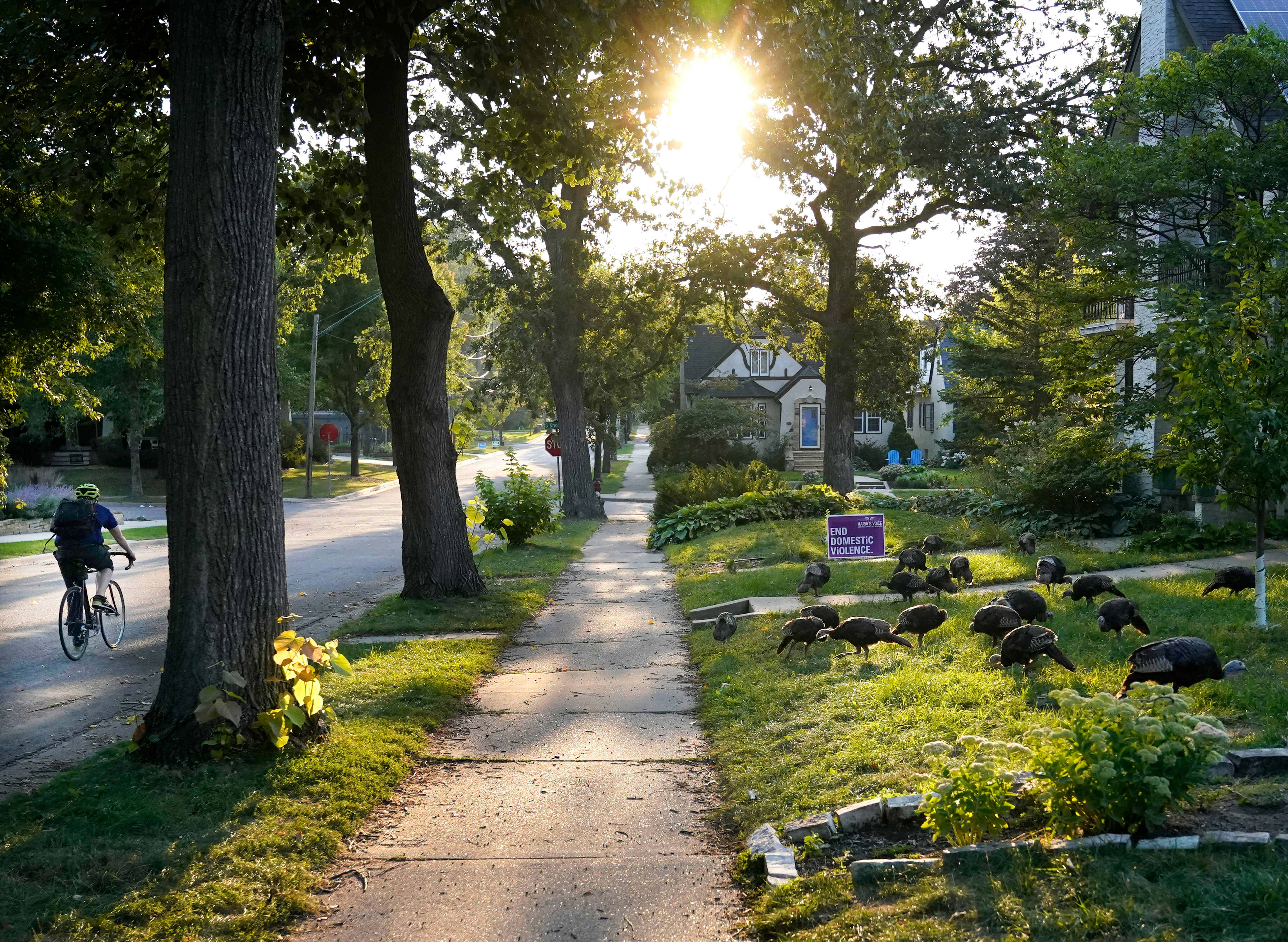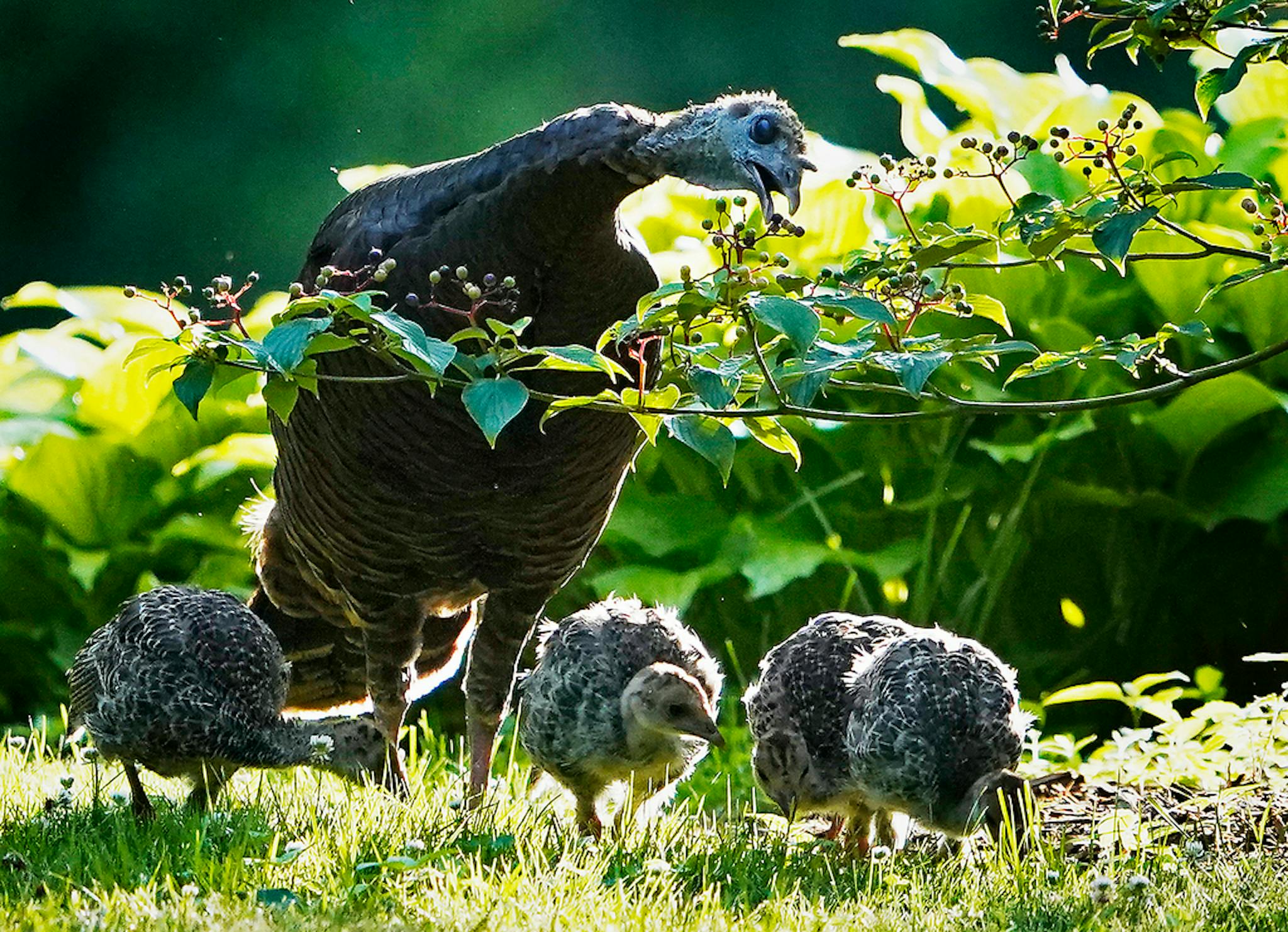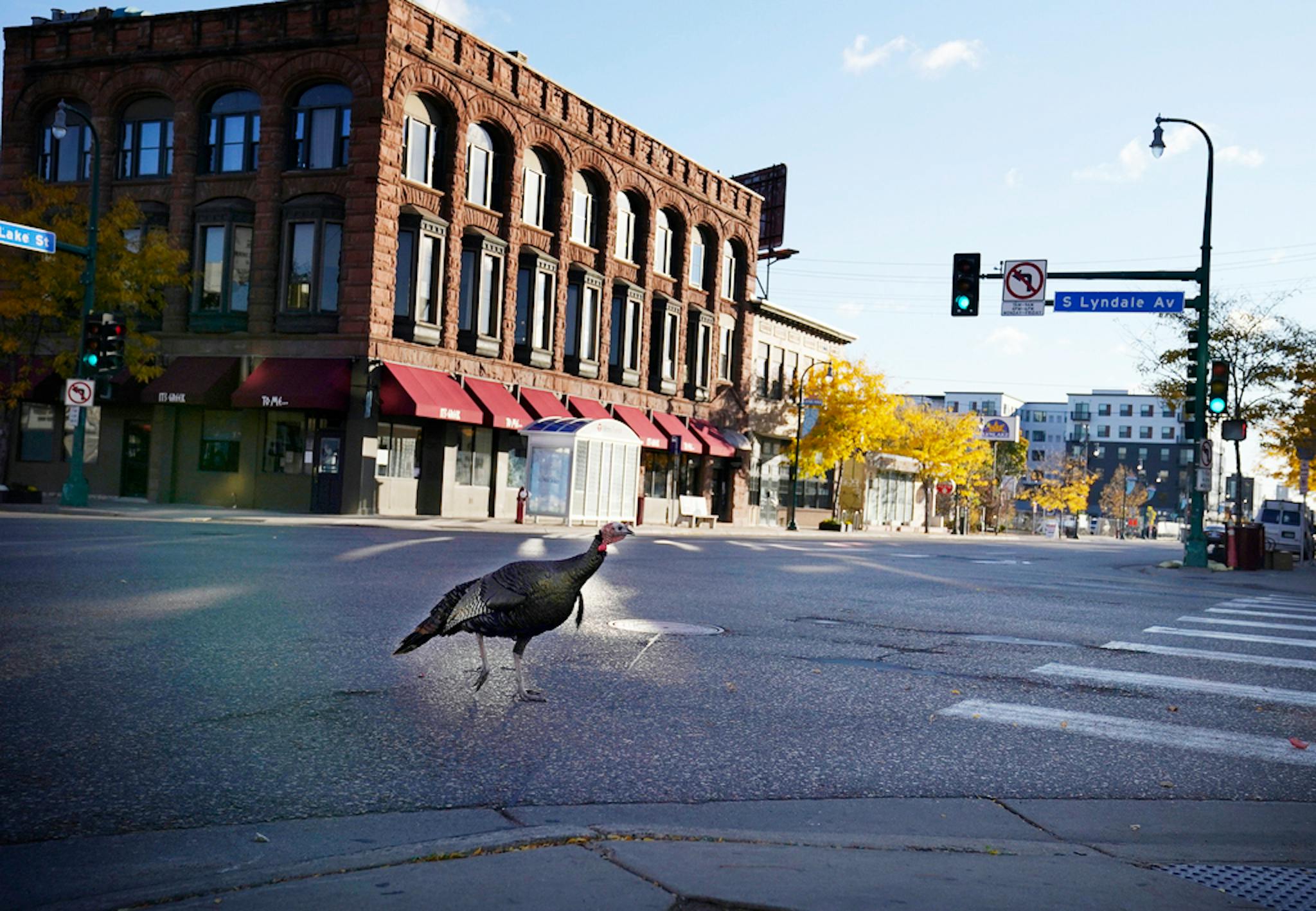Two turkeys appeared on the lawn in the half-light of the morning.
Vanishing North
An occasional series in the Star Tribune documenting the biodiversity crisis and the people struggling to head off extinction for Minnesota’s most vulnerable animals and plants.
They must have floated down from their roost nearby, somewhere up in the old oak trees that line the campus of the Minnesota Veterans Home in south Minneapolis. They were both toms — older males — and their beards scraped the grass as they walked up a hill to a small parking lot.
They ignored the employees, arriving to work and parking their cars. The people, too, didn't seem to notice the birds pecking at the seeds and bugs in the spaces between brick pavers. The Mississippi River rushed by, down a ridge on one side of the parking lot. To the other side was the traffic of Hiawatha Avenue. The bells of the nearby light rail clanged.
The scene would have been unimaginable a few generations ago. Wild turkeys were nearly extinct — entirely gone from Minnesota and Wisconsin, along with most of the rest of the country. By the 1930s, about 30,000 remained — most of them in remote places like the Missouri Ozarks and the Florida Everglades. Many doubted they would ever been seen again in Minnesota.
Today, turkeys haven't just recovered — their populations have exploded. To the delight (and annoyance) of many, the birds have made themselves at home in cities and suburbs. They've had to be shooed off the light-rail tracks. The flocks roaming the University of Minnesota campus have their own Instagram.
Their recovery is one of the greatest conservation successes in the history of the United States. They've done so well that now some question whether there is still enough space and tolerance in cities and on farms for a creature with something of an attitude that will, at times, act like the wild animal it is.



Turkeys were killed out of Minnesota by a combination of over-hunting, disease and deforestation. The state tried reintroducing them in the 1920s and the 1950s, releasing farm birds in the hopes they could adapt to the wild. They couldn't. Similar efforts failed in Illinois, Wisconsin and other parts of the Midwest.
In 1971, the Minnesota Department of Natural Resources started working with the state of Missouri. They knew they needed wild birds, so they devised a plan that could have been drawn up by Wile E. Coyote. They baited the turkeys to lure them out in the open and then used cannons to shoot nets over their heads. Over a few years, the Minnesota DNR took 29 wild turkeys from the Ozarks and brought them to southeastern Minnesota. They thrived. The reintroductions continued.
At first, people thought the turkeys would only survive in southern Minnesota. But the DNR tried releasing them near St. Cloud, then near Duluth. They handled the winter just fine. In all, the DNR released about 5,000 birds across the state. The state's wild turkey population has grown to more than 70,000. Hunting turkeys in Minnesota — a dream throughout most of the 20th century — has become a spring tradition.
Turkeys also found a home in the city. Other birds brought back from the brink — bald eagles, sandhill cranes, wood ducks and trumpeter swans, to name a few — tend to stay close to lakes, rivers and wetlands. Turkeys appear as comfortable on a spot of grass between a light rail station and a bus stop in Minneapolis as they do in a cornfield or along a deer trail in the deep woods.
The turkeys in south Minneapolis follow such a predictable pattern that employees at the Veterans Home know which field they'll be in at which times of day and where they're headed.
On most days, they're peaceful. But sometimes the birds get wound up. They'll see their own reflections in the parked cars and attack. They'll peck at each other, make a mess of the grass or charge the groundskeepers or residents with surprising speed.
The two toms nearing the end of the parking lot on that morning in late October trotted down toward Minnehaha Creek, where other turkeys were calling.
Across the creek and past the six lanes of rush-hour traffic on Hiawatha, a larger flock spread out. Six of the younger males — called jakes — crossed 54th Street together in single file, forcing a van and a sedan to wait. The jakes gathered on the sidewalk by the houses of a quiet lane as a runner jogged around them. Their goal: a birdbath near one of the garages. They each took their turns like schoolchildren, past the Weber grill and lawn chairs, to take a sip.

Three years ago in Moorhead, this conservation success story had become a nuisance. Turkeys were chasing kids and darting at letter carriers. Flocks in the dozens were tearing up the same yards over and over and leaving them littered with scat. The council tried to move 75 turkeys to South Dakota.
South Dakota didn't want them.
So in 2020, the city drew up battle plans.
"Flares, bangers, crackers, popper shells, etc. can be temporarily effective in moving wild turkeys," the city of Moorhead declared in its turkey management plan. Drones can be flown over their flocks to harass them. Remote-control cars and herding dogs will work, too. Bird spikes can be installed to keep them out from certain areas.
Moorhead Deputy Police Chief Tory Jacobson worked with the DNR to lay out every tool available to keep turkeys from taking over parts of the city. The DNR did an aerial survey of the turkey population, Jacobson said.
But it turned out that just one strategy was needed.
"A few good-hearted people were feeding them," Jacobson said. Large flocks of turkeys were starting to rely on that food — taking the same routes each day to get there. They were getting territorial over it. After officers talked to those people, the feeding stopped. The wild turkeys of Moorhead now keep to the riverside. There hasn't been a complaint since, Jacobson said.
It was late morning in south Minneapolis and the flock had grown to at least 25 turkeys. They moved from the area by a retention pond of the VA hospital, behind a bus stop and a construction site, to a quieter neighborhood. They fanned out across three front yards and curled up like cats to nap in the grass.
The fight started under a Little Free Library.
Two turkeys — both hens — went at it. The faster one pecked at the other's back. They jumped in the air and kicked each other, crying out in scratchy wails as they raced in tight circles. The fighting made the whole flock uneasy. They got to their feet, taking up the sidewalk and spilling into the street. Two flew up into an oak tree, out of the fray. Four big toms that had been lazily pecking at seeds and bugs across the street suddenly stood erect.
A woman came out on her porch across the street with her arms crossed.
"You stay away from each other," Rae Lundquist shouted to the fighting birds. "You're all OK."
The turkeys have sauntered through Lundquist's neighborhood for years. They seem to come around more often since the drought started, cleaning up under bird and squirrel feeders. Lundquist had no idea that the birds were once nearly extinct — or that there were now about as many turkeys in her yard as the first reintroductions that sparked the recovery.

But they're one reason she loves Minneapolis.
"You get the night life and the city and all of that, but you also get the trees and real wildlife," she said.
Scientists believe the closest living relatives to the Tyrannosaurus rex are modern birds like chickens and turkeys. You can see the resemblance up close, in their bony faces and deep-set eyes.
The four toms across the street had had enough. They puffed out their chests, fanned their tails and walked abreast across the street. They approached the two smaller fighting birds with a quiet haughtiness, as though they were aware their ancestors once ruled the food chain and that everything since that comet fell has been but a temporary disgrace.
The commotion stopped.
The birds all settled back down, at rest between a stoop and the sidewalk.
Correction: Previous versions of this story misstated how many turkeys were brought into Minnesota by the DNR.
Share your story
Please share feedback, questions and suggestions by using the form below. Our reporters will not share your information without your permission. Thank you.